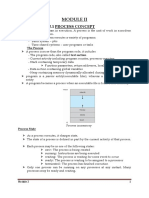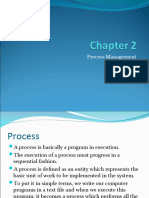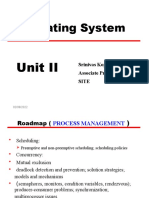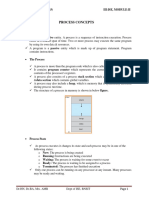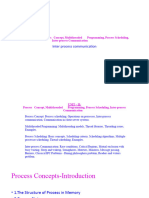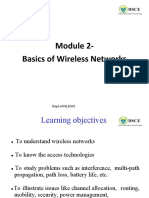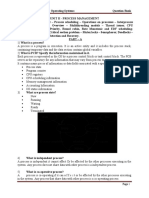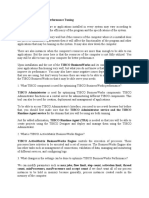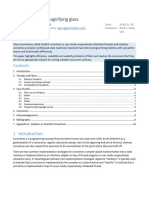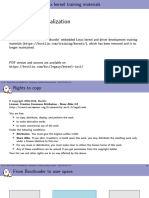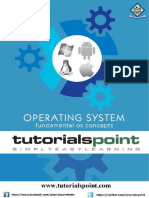0% found this document useful (0 votes)
115 views24 pagesOS Notes Module 2
The document discusses process management in operating systems. It defines a process as a program in execution, with resources like CPU time, memory, and I/O devices. A process goes through various states like ready, running, waiting, and terminated. Each process is represented by a process control block (PCB) that stores its state and scheduling information. Processes are managed through scheduling queues like ready queues and I/O queues. Schedulers select processes from these queues to allocate the CPU, with short-term schedulers selecting frequently and long-term schedulers less frequently. Context switching involves saving and loading process states when switching the CPU between processes.
Uploaded by
Radhika VenkateshCopyright
© © All Rights Reserved
We take content rights seriously. If you suspect this is your content, claim it here.
Available Formats
Download as PDF, TXT or read online on Scribd
0% found this document useful (0 votes)
115 views24 pagesOS Notes Module 2
The document discusses process management in operating systems. It defines a process as a program in execution, with resources like CPU time, memory, and I/O devices. A process goes through various states like ready, running, waiting, and terminated. Each process is represented by a process control block (PCB) that stores its state and scheduling information. Processes are managed through scheduling queues like ready queues and I/O queues. Schedulers select processes from these queues to allocate the CPU, with short-term schedulers selecting frequently and long-term schedulers less frequently. Context switching involves saving and loading process states when switching the CPU between processes.
Uploaded by
Radhika VenkateshCopyright
© © All Rights Reserved
We take content rights seriously. If you suspect this is your content, claim it here.
Available Formats
Download as PDF, TXT or read online on Scribd
/ 24












